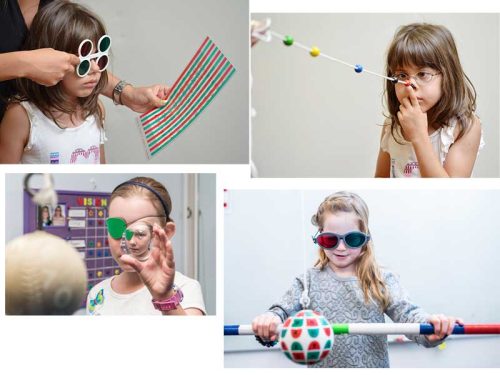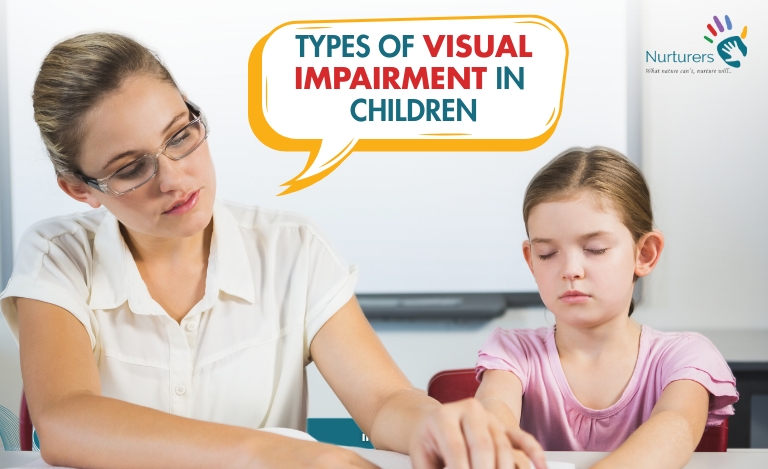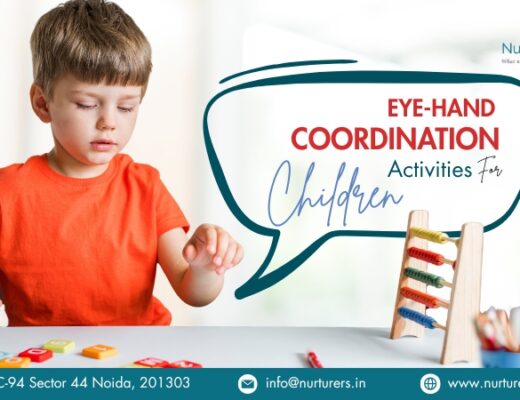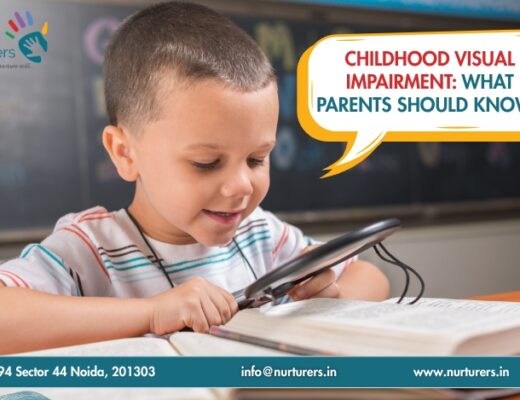Types of Visual Impairment in Children can range from mild vision challenges to complete blindness, significantly affecting a child’s ability to see, learn, and interact with the world. Visual impairment may result from genetic conditions, developmental issues, infections, or injuries. Regardless of the cause, these impairments can hinder a child’s cognitive, emotional, and social development. Early detection, combined with timely intervention such as vision therapy, assistive tools, and inclusive education, is essential to help children adapt and thrive in their environment. Understanding the different types of visual impairment in children is the first step toward ensuring they receive the right support.
What Is Visual Impairment?
Visual impairment refers to a significant loss of vision that cannot be fully corrected with glasses, contact lenses, medication, or surgery. In children, this condition can affect how they explore the world, engage with learning materials, and interact socially. It is not limited to total blindness but includes a spectrum of vision difficulties—ranging from reduced visual clarity to the inability to process visual information even when the eyes are physically healthy.
Early signs of visual impairment may include squinting, frequent eye rubbing, holding objects very close to the face, or delayed responses to visual stimuli. Since children may not be able to explain their vision problems, regular screenings and developmental assessments are crucial, especially during the early years.

Causes of Visual Impairment
Understanding the root cause of visual impairment can guide appropriate treatment and therapy plans. Visual impairment in children can stem from multiple sources:
- Congenital Eye Conditions: Some children are born with abnormalities in the eyes or visual pathways. These may include congenital cataracts (clouding of the lens), congenital glaucoma (abnormally high eye pressure), microphthalmia (abnormally small eyes), or aniridia (absence of the iris).
- Retinal Disorders: These include Retinitis Pigmentosa and Leber Congenital Amaurosis, both of which affect the retina’s ability to respond to light, leading to progressive vision loss or complete blindness.
- Cortical Visual Impairment (CVI): One of the leading causes of childhood visual impairment, CVI is due to damage or malfunction in the brain’s visual processing centers. Children with CVI may have normal-looking eyes but still face difficulty understanding what they see.
- Prematurity-Related Issues: Babies born prematurely, especially before 32 weeks, are at risk of Retinopathy of Prematurity (ROP), where abnormal blood vessels grow in the retina, potentially leading to scarring and detachment.
- Infections and Diseases: Maternal infections such as rubella, herpes, toxoplasmosis, and cytomegalovirus can affect a baby’s eye development. Childhood diseases like meningitis and measles may also impair vision.
- Injury or Trauma: Accidents that injure the eye or the part of the brain responsible for sight can result in partial or complete visual loss.
- Neurological Disorders: Conditions such as hydrocephalus, cerebral palsy, or periventricular leukomalacia (PVL) may cause visual processing difficulties due to brain damage.
- Genetic and Hereditary Factors: Many eye conditions, including albinism, retinoblastoma (eye cancer), and optic nerve hypoplasia, have genetic origins that affect the development and function of the visual system.
Types of Visual Impairment
Visual impairment in children can be categorized in various ways based on the severity, cause, and functional impact:
1. Low Vision
Children with low vision have significant vision loss but still retain some degree of sight. They may struggle with reading, recognizing faces, or navigating environments. Assistive devices, large-print books, or magnification tools can support them.
2. Moderate to Severe Visual Impairment
This includes a broader range of visual loss that hampers a child’s ability to function visually without support. They may require high-contrast materials, adaptive lighting, or text-to-speech software to learn effectively.
3. Legal Blindness
A child is considered legally blind when vision in the better eye is 20/200 or worse, or when their field of vision is less than 20 degrees. These children often need tactile or auditory learning methods.
4. Total Blindness
In this condition, the child has no light perception. They rely entirely on non-visual senses such as touch and hearing. Braille, sound cues, and mobility training become essential for learning and independence.
5. Cortical Visual Impairment (CVI)
Children with CVI may see inconsistently depending on lighting, environment, or fatigue. They often benefit from visual stimulation therapy and structured learning environments with minimal distractions.
6. Color Vision Deficiency (Color Blindness)
While not usually disabling, difficulty in distinguishing colors (particularly red-green or blue-yellow) can interfere with classroom tasks like reading graphs or identifying objects. Adaptive tools and visual cues can reduce confusion.
7. Night Blindness (Nyctalopia)
Some children can see well in the daylight but struggle in low-light conditions. It may be due to retinal issues and needs careful environmental adjustments to avoid injury or fear.

Visual Disability & Impact
The degree of visual disability can influence a child’s emotional, academic, and social development. Its impact varies based on the severity of vision loss and the presence of other conditions.
Educational Impact:
- Children with vision problems may have difficulty reading regular print, following visual cues, or copying from the board.
- They may fall behind academically if appropriate accommodations, such as Braille, audiobooks, or large print materials, are not provided.
- Poor vision can make it hard to pay attention in class or participate in group activities.
Social and Emotional Impact:
- Vision loss may lead to isolation, as the child may find it hard to engage in games or recognize peers.
- Frustration, low self-esteem, or anxiety are common emotional responses when a child is unable to keep up with peers.
- Behavioral challenges may sometimes arise as a way of expressing unseen struggles.
Physical and Motor Development:
- Vision is key for spatial awareness and coordination. Children with visual impairment may be cautious in movement, affecting their motor skills.
- Delays in crawling, walking, or balance can be observed in visually impaired children, often requiring physiotherapy or mobility training.
Communication and Daily Living Skills:
- Some children may have difficulties recognizing facial expressions or social cues, affecting their interaction skills.
- Activities like eating, dressing, or grooming may need adapted techniques and tools to support independence.
Therapy for Visual Impairment in Children
Managing visual impairment is a collaborative process involving various therapeutic approaches and support systems:
1. Vision Stimulation Therapy
Encourages the use of remaining vision through light, contrast, and movement-based activities. Particularly helpful for children with CVI or low vision.
2. Occupational Therapy (OT)
Focuses on building everyday life skills, helping the child become more independent in self-care, play, and school-related activities. OT also teaches adaptive methods for tasks like buttoning clothes or using utensils.
3. Orientation and Mobility (O&M) Training
Specialized instructors teach children how to safely move within their environments. This includes the use of canes, sound cues, and even guide dog training in older children.
4. Speech and Language Therapy
For children with combined visual and communication challenges, this therapy supports better verbal interaction and comprehension.
5. Assistive Technology and Tools
- Screen readers and Braille displays support academic learning.
- Magnification devices, audio books, and tactile graphics help visually impaired children access content.
- Customized apps and tablets with voice navigation make digital learning inclusive.
6. Educational Support & Special Educators
Children benefit greatly from personalized instruction, specialized materials, and Individualized Education Plans (IEPs) tailored to their learning style and pace.
7. Parental and Family Training
Parents are coached to modify home settings, use consistent routines, and practice safety measures to enhance the child’s confidence and independence.
At Nurturers, we bring together a team of occupational therapists, special educators, psychologists, and vision experts to create a comprehensive developmental plan for each child.

Conclusion
Visual impairment in children, if left unaddressed, can create lifelong learning, mobility, and emotional challenges. But with the right combination of early detection, tailored therapies, adaptive tools, and family support, these children can flourish in every aspect of life. At Nurturers, we are dedicated to helping children with visual disabilities see their true potential—through care, compassion, and the right interventions.

Hi! I am Swati Suri, a Special Educator with 9+ years of experience and the founder of Nurturers. I am passionate about helping children with special needs and supporting their families every step of the way.



